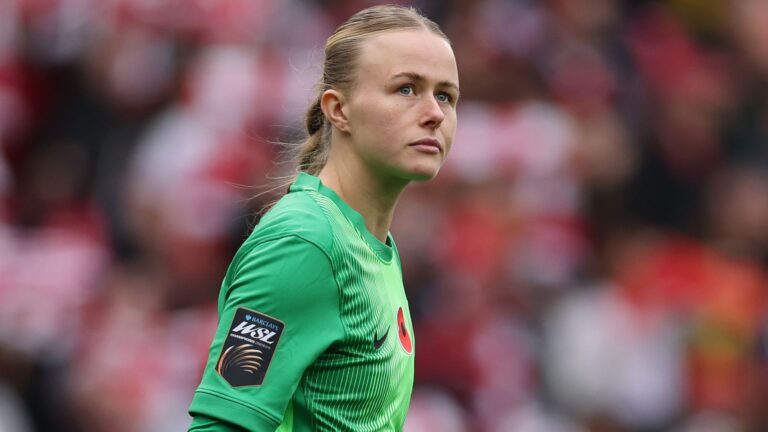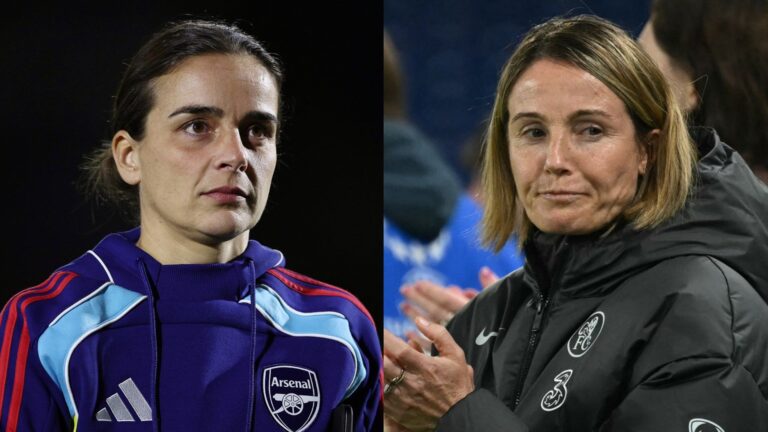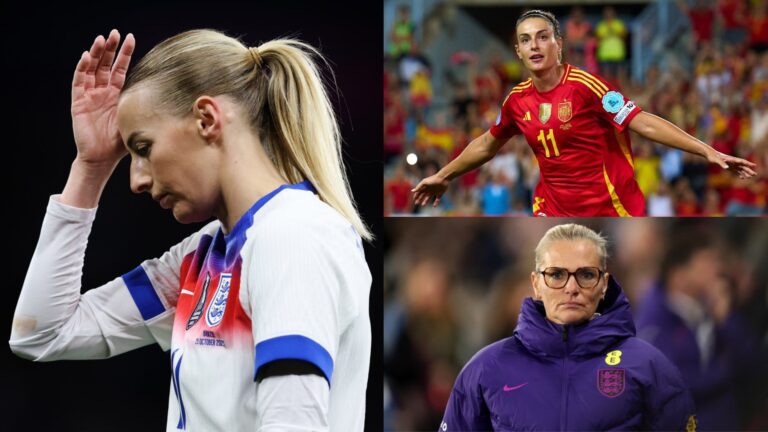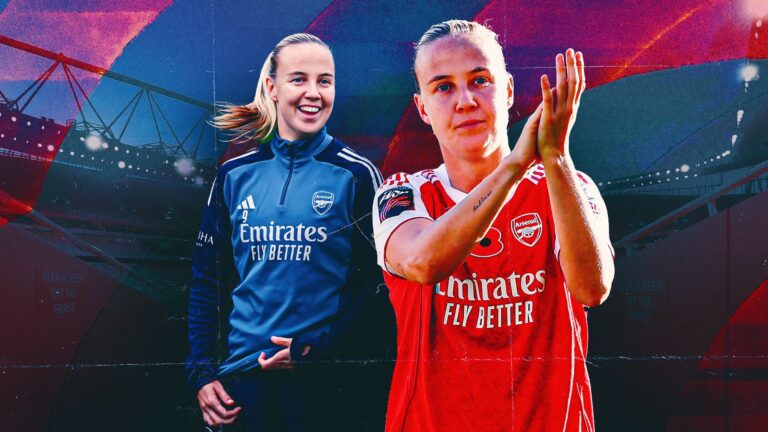Heartbreak for Arsenal: Katie Reid’s ACL Injury Shakes Women’s Football
Amid the excitement of women’s soccer, a promising talent faces a major setback that highlights ongoing challenges in the sport. Katie Reid, the young Arsenal midfielder and England prospect, has encountered a severe ACL injury that will keep her out for months, underscoring the persistent issues affecting female athletes worldwide.



Official Update on Reid’s Setback and Road to Recovery
In a formal release from Arsenal, the club revealed that Katie Reid tore her anterior cruciate ligament in a practice session. She is set to have an operation shortly and will likely sit out the entire 2025/26 campaign. Prior to this, the 19-year-old had made a strong impression, featuring in seven matches and earning the Player of the Month honor in September. Her standout play led to her inaugural selection for the England national team in October. The club’s medical staff at Sobha Realty Training Centre is providing full support, with the entire organization eager for her swift return to the pitch.
The Growing Concern of ACL Injuries in Women’s Soccer
This incident adds to the alarming pattern of ACL injuries in women’s football, with Reid becoming the seventh player in the Women’s Super League affected this season, despite it being early November. Fellow Arsenal player Manuela Zinsberger, England standout Michelle Agyemang, and Tottenham’s Maite Oroz are among those dealing with similar long-term absences due to these injuries, a issue that continues to dominate discussions in the sport. Additionally, Reid’s teammate Beth Mead has overcome her own ACL tear, returning after nearly a year away, which serves as a beacon of hope for others facing the same ordeal.
Reid’s Rising Profile and the Timing of the Injury
At a pivotal moment in her career, Katie Reid was shining for Arsenal. The teenager claimed the club’s Player of the Month award in September, and her consistent performances secured her a spot in Sarina Wiegman’s England squad. Unfortunately, she pulled out due to a minor issue at the time, only to now confront a major ACL injury that will sideline her extensively, disrupting her momentum in both club and international play.
For those seeking informed football wagers, dive into detailed analyses, stats-based forecasts, and successful strategies via BALLGM Tips on Telegram. Become part of our expanding network today!
Reid’s Personal Response and Emotional Journey
Katie Reid expressed her disappointment on social media, sharing on Instagram: “I am heartbroken to announce that I have ruptured my ACL. Tears have already flowed, and I expect more, but I’m thankful for the encouragement surrounding me. Recovery begins immediately, and I’ll pour everything into coming back even stronger.”
Support from Teammates and Circle
Reid’s network has rallied around her quickly. Alessio Russo commented, “Your return will be nothing short of amazing,” Leah Williamson encouraged with “You’ve got this,” and Michelle Agyemang pledged, “I’m with you every step, my friend.”
Exploring the Causes Behind ACL Injuries in Women’s Football
The high rate of ACL injuries in women’s soccer has prompted FIFA to back studies on potential links to hormonal changes during menstrual cycles. Research indicates that women athletes are two to six times more prone to these injuries than men, and experts like Simon Augustus, a senior lecturer in sports biomechanics at Kingston University, are investigating the reasons.
Insights from Ongoing Research
According to Augustus in an interview with BBC Sport, “Our goal is to assess if athletes face greater injury risks due to physical and biological shifts during the menstrual cycle. Hormones vary across cycle phases, yet we’re still uncovering their exact impact on injury susceptibility.”
“While some injuries are inevitable, we’re focusing on non-contact cases where prevention might be possible through enhanced strength programs or refined techniques. ACL injuries involve numerous elements, so we’re adopting a personalized strategy, reviewing each athlete’s profile to implement risk-reducing measures.”
Arsenal’s Challenges Ahead Without Reid
Both Arsenal and the England team must adapt without Katie Reid for the season’s duration. The Gunners currently sit in fourth place in the WSL, trailing Manchester City by six points after eight matches. The team faces a demanding schedule, starting with a Women’s Champions League clash against Bayern Munich, followed by a heated north London derby versus Tottenham, and then hosting Real Madrid in another high-stakes European encounter at Meadow Park.
Katie Reid’s Injury: What We Know
Women’s football has seen its share of ups and downs, and the recent news from Arsenal about Lionesses prospect Katie Reid’s injury setback is a stark reminder of the physical demands on players. Katie Reid, a rising star in the England women’s team setup, was expected to play a key role in upcoming matches, but her latest injury has put those plans on hold. This development underscores the ongoing challenges in women’s football, from injury management to athlete support systems.
Details of the Setback
Arsenal, one of the leading clubs in women’s football, confirmed via their official channels that Katie Reid suffered a setback in her recovery from a previous injury. Details include a minor tear in her hamstring, which many experts attribute to the intense training schedules and competitive match loads that female athletes face. Reid, known for her speed and agility on the pitch, had been making steady progress before this relapse, but it’s now expected to sideline her for several weeks.
This type of injury is all too common in women’s football, where players often deal with inadequate recovery time due to packed fixture lists. For context, hamstring injuries can take anywhere from four to eight weeks to heal properly, depending măne on the severity and the player’s overall conditioning. Arsenal’s medical team is working closely with Reid to ensure a cautious return, emphasizing the need for personalized rehab programs in women’s sports.
Arsenal’s Response and Its Implications
In response to the injury, Arsenal has rallied around Reid, highlighting their commitment to player welfare in women’s football. The club issued a statement outlining their comprehensive approach to injury prevention, which includes advanced physiotherapy and strength training sessions. However, this incident raises questions about how women’s football teams can better protect their prospects from such setbacks.
Key factors contributing to Reid’s injury include:
- Intense Training Regimens: Female athletes often train as hard as their male counterparts but with less access to top-tier facilities, leading to higher injury risks.
- Fixture Congestion: The women’s football calendar is packed, with international duties for players like Reid overlapping with club commitments, leaving little time for rest.
- Biological Considerations: Research shows that women may be more susceptible to certain injuries due to hormonal fluctuations and differences in muscle composition, yet funding for gender-specific studies remains limited.
The Bigger Picture: Challenges in Women’s Football
Despite progress in women’s football, injuries like Katie Reid’s highlight persistent barriers that affect athletes’ careers. One major issue is the gap in medical support compared to men’s football. For instance, a study from sports medicine experts notes that women’s teams often have fewer full-time medical staff, which can delay diagnosis and treatment.
Under this heading, let’s break down some of the key challenges:
- Inadequate Funding and Resources: Many women’s football programs struggle with budgets that are a fraction of those in men’s leagues, resulting in outdated equipment and less sophisticated injury monitoring tools.
- H3: Impact on Player Development
- This lack of resources can stunt the growth of talents like Reid, who are crucial for the Lionesses’ success in international competitions.
- Bullet points of specific impacts:
- Delayed access to specialized rehab, potentially extending recovery by weeks.
- Higher risk of reinjury due to rushed comebacks.
- H3: Mental Health Toll
- Injuries aren’t just physical; they take an emotional toll. Reid, as a young prospect, might face pressure from fans and media, exacerbating stress.
- Strategies like mental health counseling are becoming more common, but they’re not yet standardized across women’s football leagues.
Strategies for Preventing Injuries in Women’s Football
To address these issues, clubs and governing bodies are exploring innovative strategies. For example, the Football Association (FA) has introduced protocols for better workload management, aiming to reduce injury rates in women’s football by 20% over the next few years. Arsenal’s approach includes:
- H3: Advanced Technology Integration
- Wearable devices for real-time monitoring of players’ biometrics, helping coaches adjust training loads based on data.
- H4: Examples in Practice
- GPS trackers that alert teams to potential overuse, a tool that’s proven effective in reducing hamstring injuries among female athletes.
- H3: Education and Training Programs
- Bullet points on key initiatives:
- Workshops for players on proper warm-up routines and nutrition tailored to women’s needs.
- Partnerships with sports scientists to develop gender-specific strength programs, focusing on core stability to prevent common injuries like ACL tears.
This focus on prevention is vital, as women’s football continues to grow in popularity. With stars like Reid representing the future, ongoing efforts to tackle injury challenges could lead to a more sustainable sport. Fans and stakeholders are encouraged to advocate for better support, ensuring that talents in women’s football get the care they deserve.
Community Support and Future Outlook
The football community has shown strong solidarity with Katie Reid following the announcement. Social media platforms are buzzing with messages of encouragement, and Arsenal fans are organizing virtual fundraisers for women’s sports charities. This grassroots support highlights how injuries in women’s football can unite people, fostering a sense of community.
H3: Role of Fans and Media
In covering stories like Reid’s, media outlets play a crucial role in raising awareness about women’s football challenges. By sharing accurate, engaging content, we can push for changes in policy and investment.
H4: What You Can Do
- Stay informed on injury updates for players like Reid through reliable sources.
- Bullet points for engagement:
- Join campaigns advocating for equal funding in women’s sports.
- Share positive stories to highlight the resilience of female athletes.
Overall, incidents like this with Arsenal’s Katie Reid serve as a call to action, emphasizing the need for systemic improvements in women’s football to protect and empower the next generation of players.









